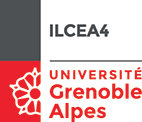Contemporary Writers Reading Literatures of the Past
Editeur : Université Grenobles Alpes - Représentations dans le monde anglophone. La revue électronique du CEMRA
edited by Anne-Laure Tissut and Léopold Reigner
Even before the development of a more international awareness of literature, partly thanks to extensive translation practices, writers have been finding inspiration not only from acknowledged literary traditions, but also in individual works from the past or contemporary times. Reading – writers’ initial link with literature – offers material for writing, while fashioning writers’ conceptions of literature, as well as their vision of their own work in relation to tradition.
This volume explores various forms of textual influence as manifested in the works of 20th and 21st centuries authors, to both trace continuities and assess said authors’ “singularity,” in Derek Attridge’s terms. The papers gathered in this volume analyse a large variety of forms of influence, be they visible in the chosen topics or objects, in style, manner, or language itself—turns of speech, recurring motifs, or rhythmic patterns. Quotation, unacknowledged borrowing, allusion, imitation, parody, travesty, are but a few examples of the presence—unconscious or not—of another text in a literary work.
Table of Contents
Anne-Laure Tissut et Léopold Reigner : Introduction
Dan Beachy-Quick : Overture : Epistemic Flow
Michael Federspiel : Aristote s’invite chez Nabokov : le ressort tragique dans Lolita
Léopold Reigner : Nabokov’s Flaubert : Influence, Deviation and Continuity
Elsa Court : Nabokov, Kerouac, Updike : Exploring the Failed American Road Trip
Pierre-Antoine Pellerin : Redressing Whitman : Jack Kerouac and the Postwar Anxiety of Queer Influence
Florian Beauvallet : The Singularity of Reading
Sophie Chapuis : Writing under Influence : Rick Moody’s Stereophonic Autobiographies
Anne-Julie Debare : A fellowship of imaginations : Sebald’s aesthetics of chiaroscuro in The Exquisite by Laird Hunt
Clint Wilson : Counter Misprisions ; Or, the Influence of Anxieties in Mat Johnson’s Pym






